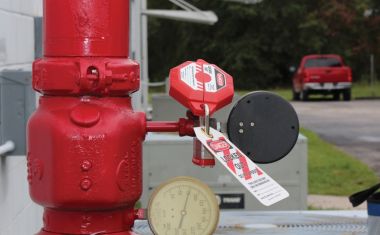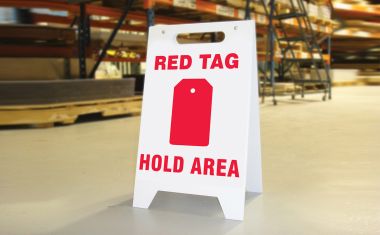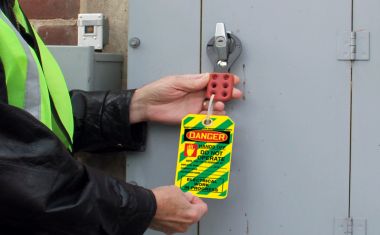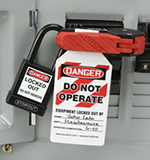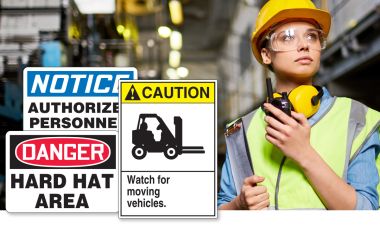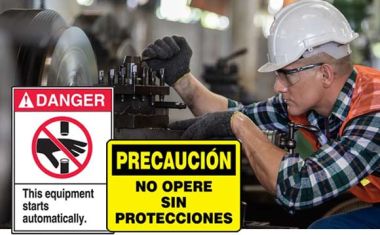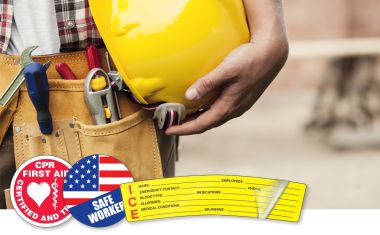OSHA & ANSI Headers 101
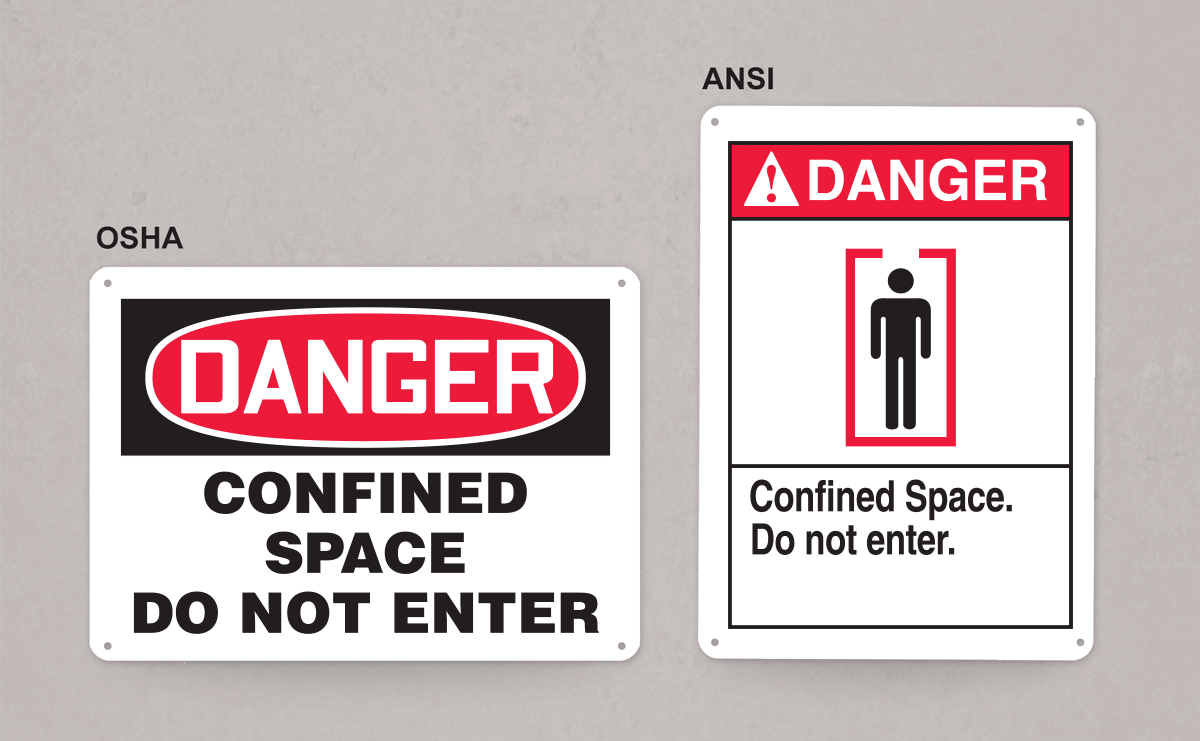
Why choosing the right header sign and understanding the difference between OSHA & ANSI is important
Did you know the signs in your business are a direct reflection of your company’s safety culture?
Just think for a moment – your employees walk through the doors of your business or onto your jobsite with the same expectation every day – to go home safely. Without effective safety signs – like the Occupational Safety and Health Administration (OSHA) and the American National Standards Institute (ANSI), your workers wouldn’t know about potential hazards in the area...until it’s too late.
Consider OSHA and ANSI signs as the first line of defense against accidents. With the right safety messages and headers, you can effectively alert others about dangers in their immediate work area.
What’s the difference between the OSHA and ANSI header style?
The most visible difference between OSHA and ANSI header style is that ANSI signs and labels have a triangle with an exclamation point inside (also known as the safety alert symbol), followed by a large symbol or pictogram in the center of the sign, left justified, and upper/lowercase message lettering.
The traditional OSHA signs and labels use upper/ lowercase lettering, and the message is generally centered underneath the header. More about the difference between OSHA style and the ANSI style signs here.
How to determine the appropriate OSHA or ANSI header?
It’s important to ensure the header you select matches what you need to communicate. For example, you wouldn’t place a notice sign in the area of immediate danger – your sign wouldn’t effectively keep others away from the hazards.
As indicated by ANSI Z535 and OSHA 19103.145 specification for accident prevention signs are required to follow this color scheme:
- Danger – Red, or predominantly red, with lettering or symbols in a contrasting color. A danger header sign is used to indicate a hazardous situation that, if not avoided, will result in death or serious injury.
- Warning – Orange, or predominantly orange, with lettering or symbols in a contrasting color. A warning header sign is used to indicate a hazardous situation that, if not avoided, could result in death or serious injury.
- Caution – Yellow, or predominantly yellow, with lettering or symbols in contrasting color. A caution header sign is used to indicate a hazardous situation that, if not avoided, could result in minor or moderate injury.
- Notice – Blue, or predominantly blue, with lettering or symbols in contrasting color. A notice header sign is used to indicate information considered important but not hazard-related.
- Safety First – Green, or predominantly green, with lettering in contrasting color. A safety first header sign is used to indicate specific safety-related instruction or procedures that are related to safe work practices.
What’s the main difference between OSHA and ANSI?
Here is a brief overview: OSHA is a regulatory body tasked with ensuring safe and healthy working conditions by, “setting and enforcing standards by providing training, outreach, education, and assistance.” More about what is OSHA here. ANSI oversees the development and use of standards and is the voice of the U.S. standards and conformity assessment system and plays a critical role in creating international standards. More what is ANSI here.
To summarize: The main difference between OSHA and ANSI is that OSHA standards are enforced, while ANSI regulations are voluntary – except when they’ve been adopted by OSHA standards.
When considering the safety sign you need, you can choose between OSHA or ANSI header signs. OSHA adopted the ANSI Z535-2011 standard for safety signs, which makes both newer ANSI (ANSI-ISO) and traditional OSHA signs acceptable.
